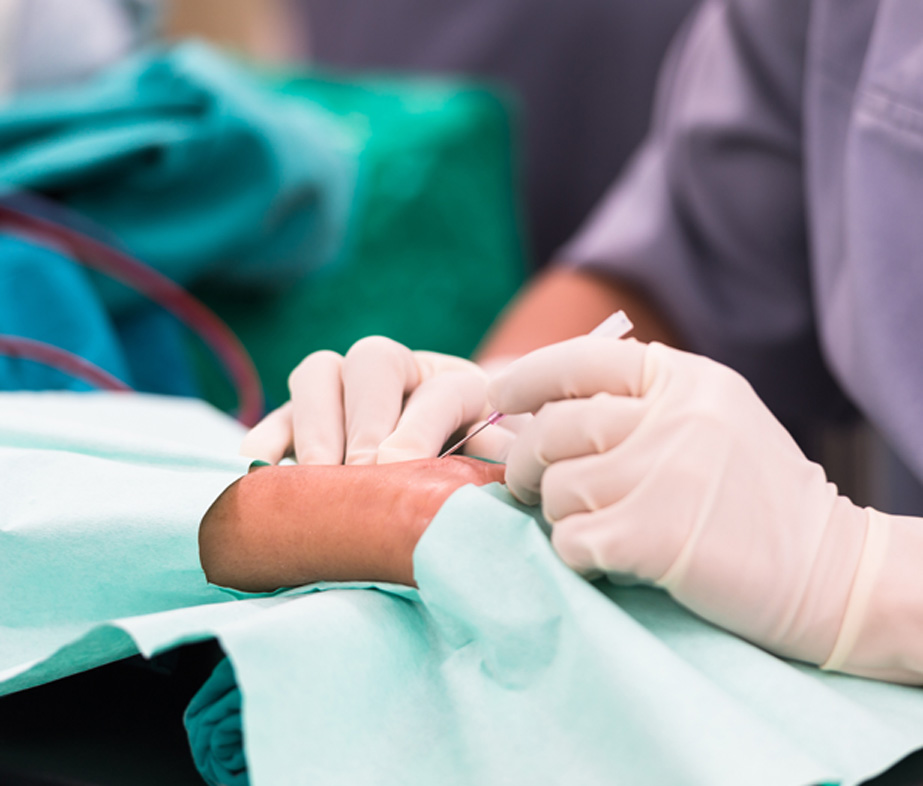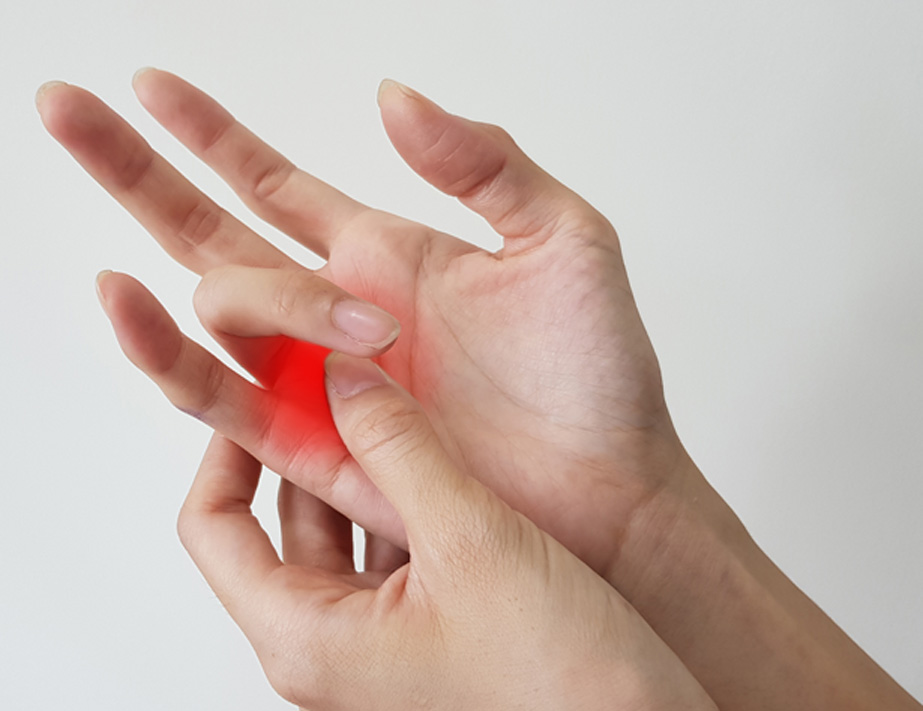
Trigger finger is a condition that makes it difficult to straighten and bend the finger.
The finger may bend or straighten with a snap, like a trigger being pulled and released. Trigger finger occurs when inflammation narrows the space within the sheath that surrounds the tendon in the affected finger.
The condition may affect any finger and develop in more than one finger at the same time. Individuals may experience trigger finger in both hands.
Symptoms of Trigger Finger
Signs of the condition may include:
- Finger stiffness that is most severe in the morning
- A popping or clicking sensation as the finger is being moved
- Tenderness or a bump in the palm at the base of the affected finger
- Inability to straighten a finger that is locked in a bent position
- Finger suddenly popping straight after catching or locking in a bent position
Risk Factors of Trigger Finger
Individuals may be more likely to develop trigger finger if they:
- Are female
- Are between the ages of 40 and 60
- Have carpal tunnel syndrome
- Engage in hobbies that involve repetitive hand use and prolonged gripping
- Work in an occupation that requires repetitive hand use and prolonged gripping (musicians, farmers and industrial workers)
- Have certain health conditions, such as diabetes, rheumatoid arthritis, hypothyroidism or tuberculosis
Diagnosing Trigger Finger
The condition may be diagnosed with a physical exam. During a visit to the physician, the doctor will ask simple questions about the patient’s medical history and listen for a clicking sound when moving the finger. The physician will observe the patient opening and closing their hand. Imaging tests are typically not required to make a diagnosis.


Treating Trigger Finger
Patients may treat their trigger finger at home by:
- Taking a break from repetitive activities for four to six weeks
- Wearing a brace or splint
- Applying heat or ice to reduce inflammation
- Placing the hand into warm water several times a day to help relax the tendons and muscles
- Stretching the fingers to enhance their range of motion
Patients may also take anti-inflammatory medications such as ibuprofen and naproxen. If these treatments fail to relieve symptoms, a patient’s physician may recommend a metacarpophalangeal joint injection.
Risks and Side Effects
The procedure is relatively safe. Common or possible side effects include infection, increased pain and weakness. Patients should speak to their physician to determine if a metacarpophalangeal joint injection is an appropriate treatment for them.
What to Expect During a Metacarpophalangeal Joint Injection Procedure
The procedure begins with the physician cleansing the injection site with an antiseptic. The physician will use ultrasonic guidance to ensure the needle is inserted in the correct place. Once the needle is correctly positioned, the local anesthetic and steroid will be injected.
After the Procedure
Once the procedure is completed, the patient will be allowed to go home. They will experience immediate pain relief as a result of the anesthetic. Lasting pain relief will begin two to three days after the injection, once the steroid begins to work.

